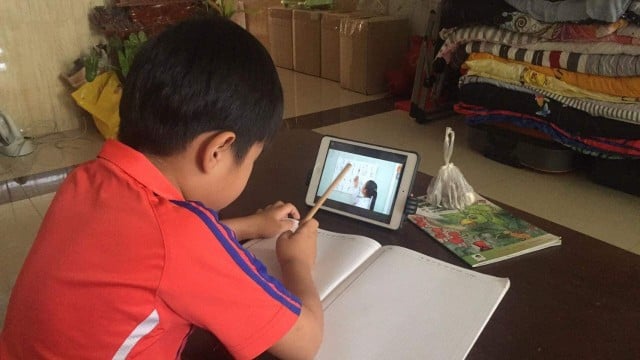Opinion: Can Challenges Stimulate Change in Online Learning?

- Ky Chamna
- April 21, 2021 9:07 AM
The pandemic has disrupted studying in Cambodia, but can we learn from the changes and challenges to address wider issues in the education system?
Schools and universities, which are primarily designed to handle a huge number of students and staff together, have been hugely disrupted by the pandemic which interfered heavily in Cambodia’s education sector. For over a year now, a considerable number of universities, both public and private, have been switching back and forth between physical classes, distance learning and blended learning—a mix of physical and online classes that blends traditional education methods with self-study.
This has left many students out of their comfort zones and unable to properly make the most of their higher education.
For the last year, bedrooms, living rooms and even coffee shops became makeshift classrooms for many of Cambodia’s university students. Tools such as smartphones, tablets and computers, along with internet connections, became vital to the consistent pursuit of education. However, spontaneously adapting to new and unprecedented changes is not always going to be easy. Disagreement and challenges inevitably arise, but over time, these changes become easier to accept.
When universities began to cancel physical classes during the pandemic, online learning and blended learning, created friction among university students—although many are very familiar with technology in terms of social media and gaming, it was challenging to instantly switch to online learning.
Due to a dependency on fragile electricity supplies and internet connections, the shift to digital learning presented challenges for students in uneven measures. Without the internet or electricity, the magic of a classroom vanishes into a blank screen and so access to these amenities has determined how consistently students can study throughout the pandemic.
Even for those with stable internet connections, the speed of the connection is also a determining factor in allowing the students to catch up with lectures. Slow internet connections corrupt the audio and video quality, which prevents students from being able to understand what is happening in class.
But again, education is brought to life by educators and for many students, so being sat in front of a screen alone lacks the stimulation that a good teacher and a collaborative educational environment can bring to the classroom. This was underscored by students who couldn’t turn on their cameras during class due to the limited internet bandwidth. This added to the challenge of staying focused, making it hard for students to concentrate alone or to conduct group studies effectively—these had to be restructured to address the challenges of internet access.
Nevertheless, the benefits of online learning have been seen along the way. Generally, it has provided students with the concept that learning is not always about attending a physical classroom together—digital learning has led to reduced costs and time spent on transportation. This has also had the benefit of reducing the risk of accidents, as many students spend as much as three hours a day getting to and from universities—particularly at peak hours. The same has happened to spending on food and drinks as students have been able to enjoy homemade food and reduce expenditures slightly.
But most importantly, the jump to distance learning has taught students to be responsible for their own studies. It has helped to foster, for some students, a sense of self-teaching, which is a necessary skill to learn and helps develop critical thinking skills, as well as organizational skills in managing time.
Lastly, a prolonged marathon of online learning can also motivate students to change the way they digest information on the internet. Before online learning took place, students normally relied on physical classes in order to receive educational information. After class, the internet was used mostly for entertainment or gaming, but now students are more used to using online educational resources, which has a beneficial impact on their studies.
While these upsides sound optimistic, the real-world application of distance learning has proven more complicated and thrust uncomfortable truths into the forefront. For students of different backgrounds, the pandemic has been a wholly different experience. Those with money, space, access to internet, the necessary technology and stability at home have been able to adapt much easier than those whose households lack these privileges. Students from lower income backgrounds—who were already more likely to fall behind in their studies—have been even further left behind by the lack of physical classrooms and there has been little done to address the problems caused by these inequalities.
That’s not to say they can’t be addressed and given enough resources and infrastructure, distance learning could serve to bring high quality education to even more Cambodians, especially those who would not otherwise have access to such opportunities.
It has been a year of resilience for students who have been forced to adapt to a constantly changing threat, but perhaps out of these challenges, it will be easier for policymakers, educators and students alike to bring about positive change.















